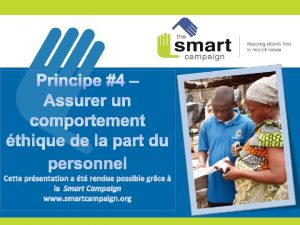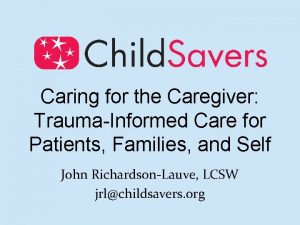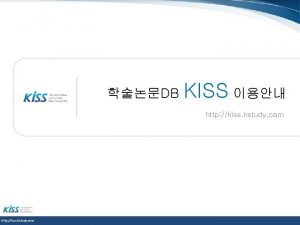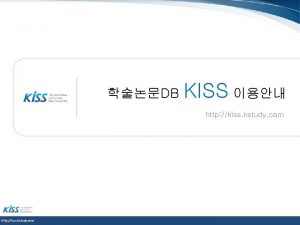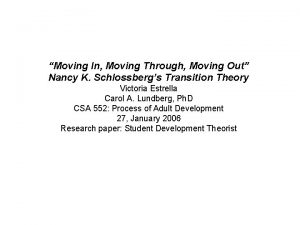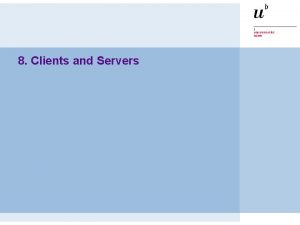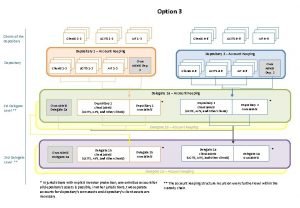Moving Clients from Kiss and Tell to Tell












- Slides: 12

Moving Clients from “Kiss and Tell” to “Tell and Kiss” Supporting Conversations Around Patient Self Disclosure of HIV or STD Status Greg Mehlhaff, BS, Assistant Director Linda De. Santis, M. Ed. , Behavioral Training Coordinator Alice Gandelman, MPH, Director

CA STD/HIV Prevention Training Center (CA PTC) www. stdhivtraining. org

Supporting Self Disclosure of HIV/STD Status Another option for STD partner management Course developed to enhance provider skill Address complex issues around disclosure Many patients need skills and assistance Similar issues with patients infected with HIV and other STDs HIV/STD co-infection

Missed Opportunities? Sex partners: 3 -named, 7 -known, but refused to name. Sex partners : 1 -named, 1 -marginal, 4 known, but declined to name. Reported 2 sexual partners (declined to release locating information) Sex partners : 2 -named, 23 -known, but declined to name. Reported 4 sex partners during the interview period (declined to name)

Rationale Important prevention intervention for persons living with HIV/STD – Most infected persons want to prevent transmission to others – Many want to disclose their HIV serostatus – Many want to talk to their providers about disclosure issues – 75% choose to self disclose their HIV status to partners – (CA PCRS data)

Disclosure Activity

Challenging Clients/Patients Resistant to giving partner names Distrustful of Public Health Anonymous partners Internet partners/CSV partners Only one partner (steady, spouse) May have substance use or mental health issues Concerns about confidentiality Personal safety/fear of violence

Missed Opportunities! Sex partners: 3 -named, 7 -known, but refused to name. Sex partners : 1 -named, 1 -marginal, 4 -known, but declined to name. Reported 2 sexual partners (declined to release locating information) Sex partners : 2 -named, 23 -known, but declined to name. Reported 4 sex partners during the interview period (declined to name)

The Model 4 -Step model to facilitate positive disclosure outcome – 1) Transition from topic at hand to self disclosure – 2) Discuss whom the client is considering telling explore concerns, benefits, confidentiality, other things client might also be disclosing – 3) Coach client regarding a specific disclosure anticipated reaction of person being disclosed to (DV) offer opportunity to practice (what s/he will say) provide appropriate referrals – 4)Summarize discussion

Self Disclosure in Syphilis Partner Management? Potential disadvantages Difficult to document notification May take more time to Tx partners Uncertainty that patient will follow through Patient may not be clear about disease or action to take Potential advantages Might be most acceptable option for patient More effective with email notifications Anonymous partners may be seen again in same setting May be able to maintain primary relationship Use fewer program resources Dual disease disclosure (Syphilis/HIV)

Conclusions May prevent or address missed opportunities Less emphasis on how to effectively disclose, or of potential consequences of disclosure Developed training to increase providers’ comfort and skill level to effectively discuss HIV/STD disclosure issues with their clients/patients Discussion of HIV/STD status can be very risky for clients/patients and providers

Contacts Linda De. Santis, M. Ed. , Behavioral Training Coordinator CA STD/HIV Prevention Training Center CA DHS/STD Control Branch 510 -883 -6661 ldesanti@dhs. ca. gov Greg Mehlhaff, BS, Assistant Director CA STD/HIV Prevention Training Center CA DHS/STD Control Branch 510 -883 -6649 gmehlhaf@dhs. ca. gov Alice Gandelman, MPH, Chief Disease Prevention Section Director, CA STD/HIV Prevention Training Center STD Control Branch 1947 Center Street, Suite 201 Berkeley, CA 94704 ph: (510) 883 -6657, fax: (510) 849 -5057 agandelm@dhs. ca. gov
 Bi vs dss
Bi vs dss Web essentials clients servers and communication
Web essentials clients servers and communication Clients often criticize public relations firms for
Clients often criticize public relations firms for Call script for recruiter
Call script for recruiter Déontologie
Déontologie étude de flux
étude de flux Typologie des clients insatisfaits
Typologie des clients insatisfaits Ibm thin client
Ibm thin client How to schedule appointments with clients
How to schedule appointments with clients Trauma-informed questions for clients
Trauma-informed questions for clients Social work assessment questions for clients
Social work assessment questions for clients Nudge for clients
Nudge for clients Multicultural view of existentialism
Multicultural view of existentialism




